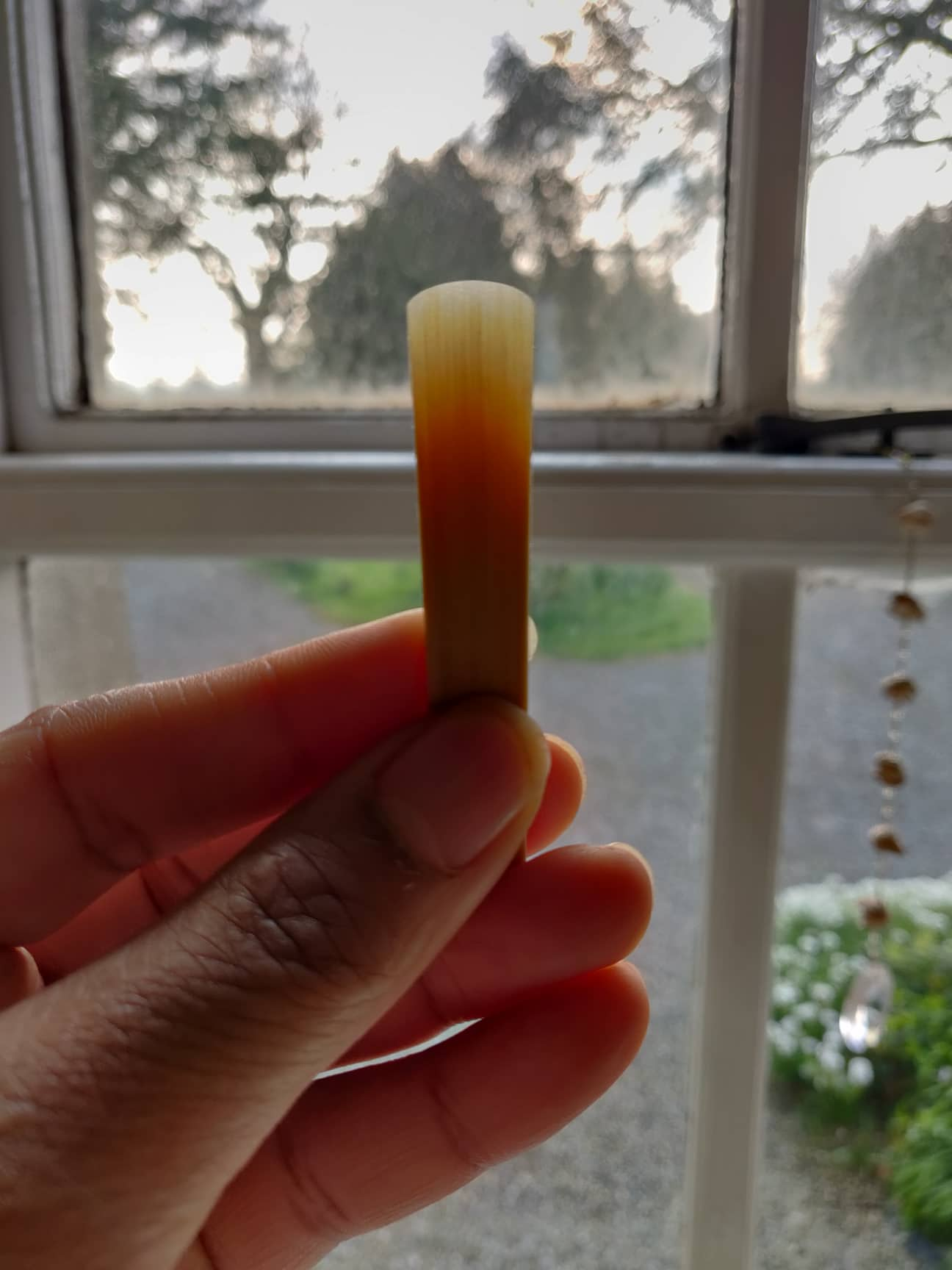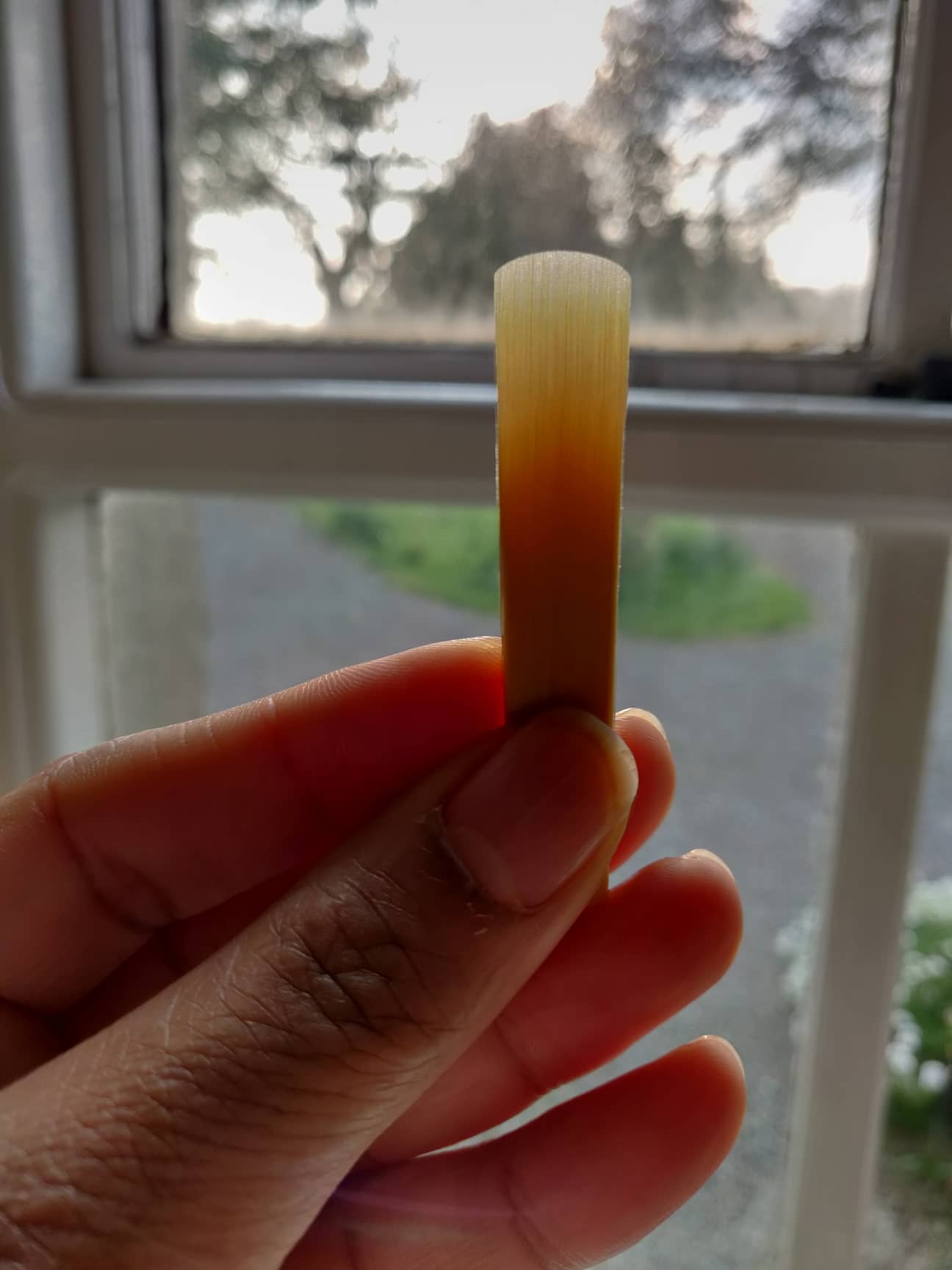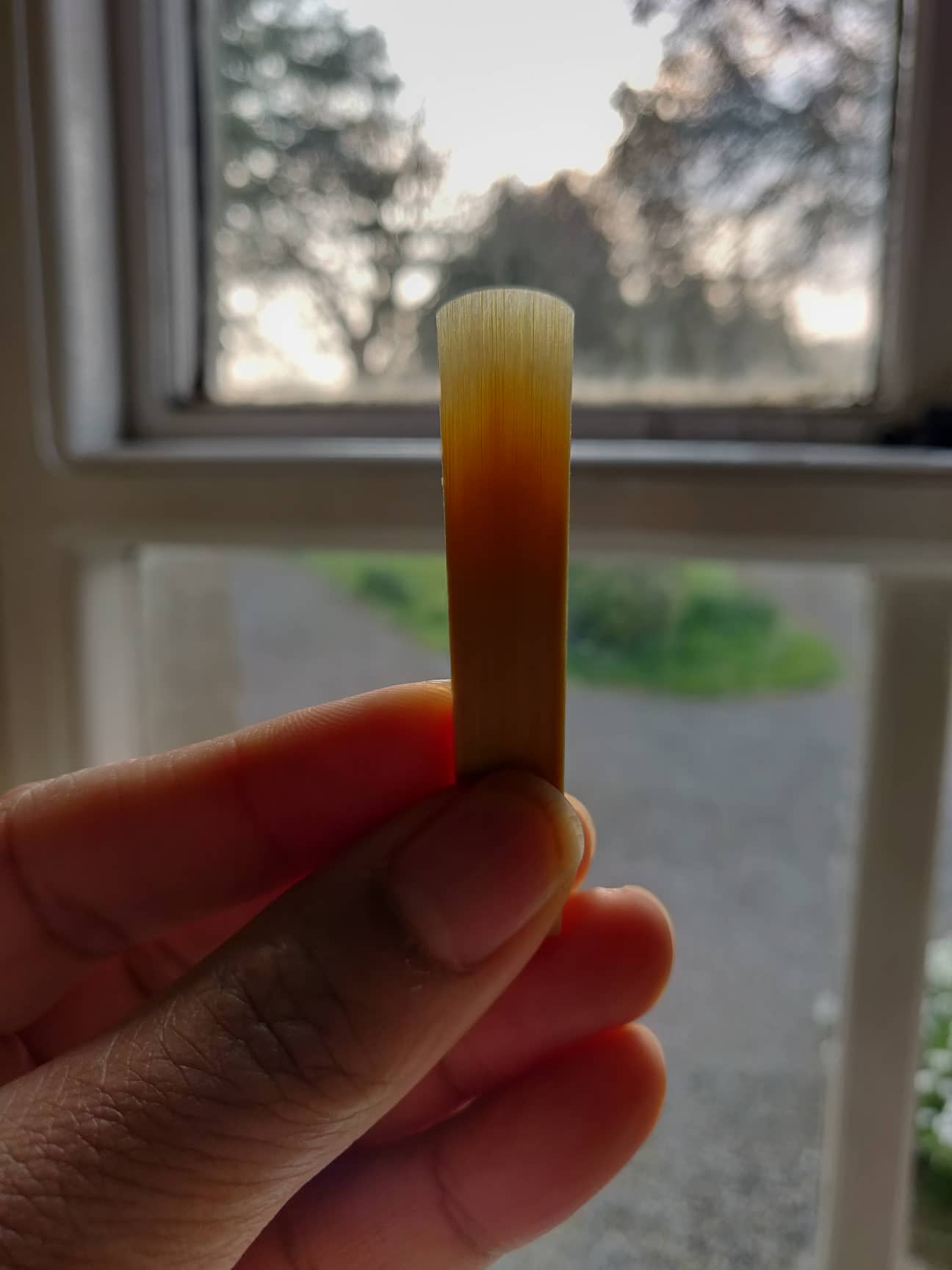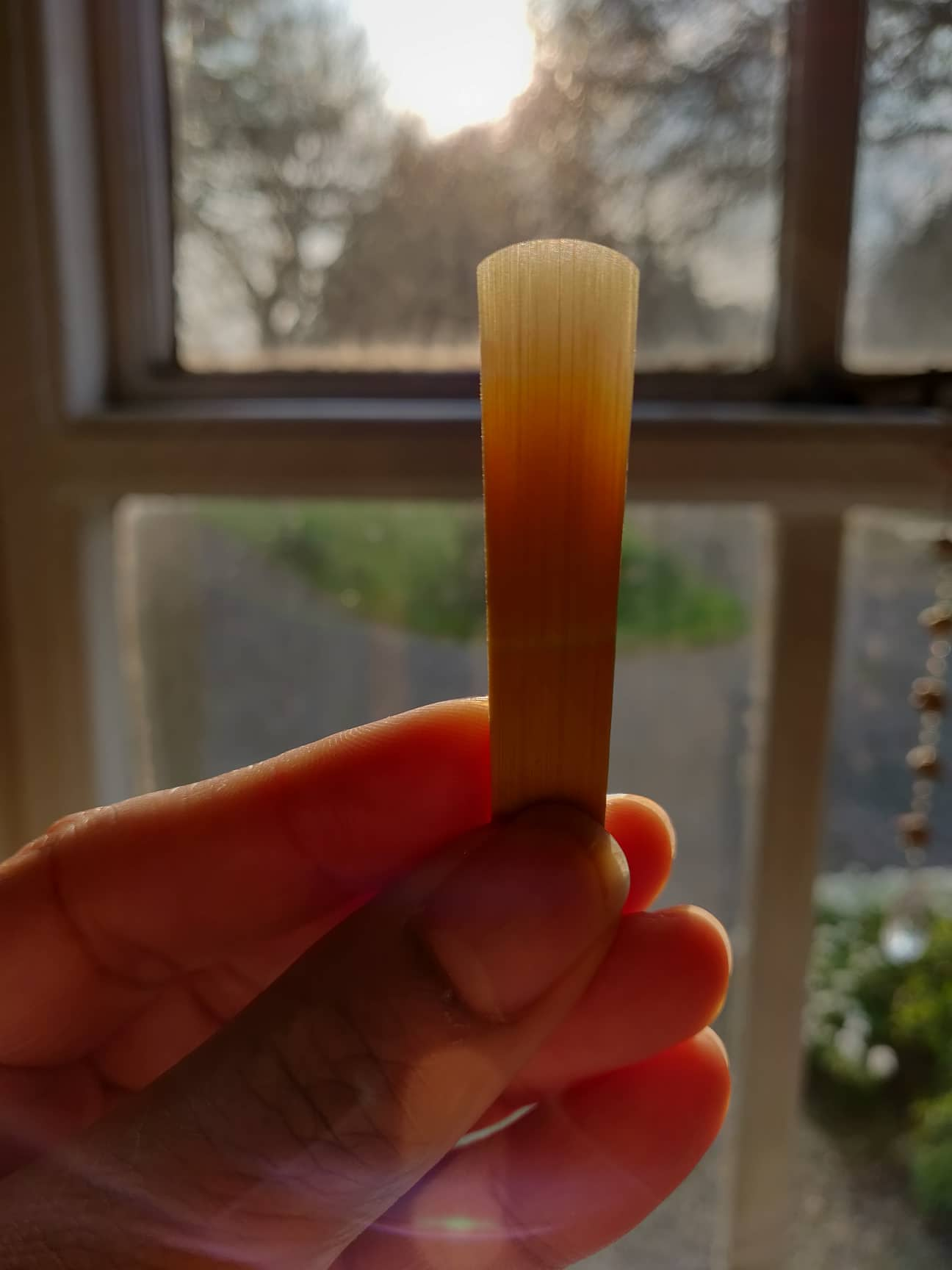Pilgerstorfer “Dolce” Bb Clarinet Reed
This spring I embarked on a new journey, one of discovery and experimentation. This spring I committed myself to finding the reed setup that works best for me 😀 and as serious as this journey is for any reed player, few seem to go on said quest beyond the initial recommendations of their principal teacher. The truth is there are a myriad number of reed manufacturers whose products might be superior for you than the industry standard.
I've spent the majority of my clarinet life both as student and as a professional playing Vandoren reeds. I went from the blue box 3, 3.5, & 4 to a short stent with the silver box 3 & 3.5 to finally settling on the black box 3, 3+, & 3.5. During thev early years of my undergrad and ostensibly the earliest period of thisprocess of discovery I played exclusively on the newly released Zonda reeds strength 3 & 3.5. I found that they functioned excellently in the warm, humid conditions of Florida climate and their newness made then seem a bit of a boutique, novel experience and let's be honest, clarinetist love a boutique experience. During this period I was also fluctuating between a few mouthpieces: my primary mpc, a Greg Smith 1*; a Vandoren M13, the short lived M14, and finally the M15 which I played on up until my Master's. As can probably already be gleaned, this transitioning process between mouthpieces and reeds required me to have a very clear mental concept of what I wanted to sound like, what I wanted the response to be like in every register, with every form of articulation, with whatever reed/ ligature combination. During this period I was as much searching for my own unique voice as I was the Holy Grail of reeds and I think ultimately any such artistic journeys at whatever stage of development are just that - a quest for one's own voice and musical identity.
I played predominantly on a BG leather ligature with the red core, having switched from the Rovner leather and with all other variables now relatively stable I felt I had found what worked for me. Fast forward some years, bypassing the short period of me using Rico Selectv reeds, later becoming D'Addario, and playing exclusively on a Vandoren B40 (currently B40 13) and a Vandoren leather ligature with the metal insert or the Vandoren pink gold metal ligature, and I'm back at it, trying to find improved response and articulation, color and depth, expansion in tone, and flexibility of sound - all the buzz words and cliché anecdotes that we as clarinetists use to concretely describe a subjective and abstract concept which has led me to Pilgerstorfer.
Two or so years ago I tried them out with varying degrees of success. I ordered the sampler box that came with a mixture of their cuts and sizes and found myself gravitating heavily towards the Dolce line but didn't have the adequate reed strength to fully commit since my sampler box was a mixture of 3, 3.5, & 4 with the 4 feeling more akin in strength to the Vandoren Rue Lepic 3.5 with which I was more familiar. This week I've begun my second trial of Pilgerstorfer reeds this time ordering 4, 4.5, & 5 to see if I can't better hone in on this brands strength that works best for me. In the following narrative I will break down my break-in process for these and all my reeds and the steps I've taken to ensure I get the best result from them.
Post water soak air dry
Day 1: I've randomly selected two reeds of each strength (4, 4.5, & 5) and wet them by swirling them around in warm water, first the tip and then the heel. I then lay them flat on their back, flat side up, and let them air dry. Once they've completely dried I do this again. In the past when I've needed a quicker turnaround time, I've gone through this step multiple times in one day which I believe can help the reeds cure faster, however doing this once or twice a day for a few days should be adequate to stabilize them and minimize the amount of change that takes place once you've begun playing them. (Sidenote: I live in Ireland where the humidity is generally high and temperatures are mild to moderate. It can take a bit more time to let thev reeds fully air dry as compared to living in a dry, arid region. For this reason if you wish to follow this curing process you may need to adapt it for your climate.) I did not play them on the first day.
Day 2 - 3: Same as above. By Day 3 you will start to notice that the greenish-yellow sheen of the new reed has faded and a stabler, matte finish will appear. This is a good sign as at this stage shifting in the cane is reduced due to the repeated absorption and evaporation of water from the xylem of the reed. It's around this time that I like to hold the reed up to light to see the grain and thickness of the cane.
Day 4: I soaked each reed individually and laid them out as described above then go back to the first reed I started with on this day, swirl it in warm water, gently blow or the excess via the heel and began playing on it for a few seconds. No longer than a minute and no notes in the altísimo register. Once I did this I again swirled it around in the water, gently blue out the air, and laid the reed on its back, flat side up. Repeat this step with the remaining reeds. (Sidenote: when a reed feels particularly resistant, I do not force it to play or attempt to augment it in any way. I swirl the reed in warm water, gently blow out the excess, and lay it on its back, flat side up, and continue my process with the other reeds)
On the first day of play testing the reeds I observed the 4’s being the most readily playable with fairly consistent response throughout the registers and a clear ringing sound; followed by the 4.5’s with a bit more resistance but still providing ring and depth but with a bit more heft and weight to the sound and requiring a bit more intention in the use of the embouchure. The 5’s were either too hard or playable but with much heavier resistance than the 4.5’s. I will continue breaking them in to see if they change any further and become more playable as a result. If I had to choose a strength to play on and purchase in bulk based on today's findings I'd go with the 4’s, but I'd be more inclined to purchase a mixture of 4’s & 4.5’s.
After the first 4 or 5 days I let the reeds rest for a few days though I could have continued the above break-in process without any rest. Since I let them rest when I went to play them they weren't yet ready to be played fully though they did show promise, particularly the 4s which proved to be the most responsive and free blowing with my current mouthpiece/ligature setup. I will continue to break them in along with my standard Vandoren black box 3’s & 3.5’s. I'm optimistic about the prospect of switching and could very well see myself purchasing them in bulk from www.pilgerstorfer.net
Since this is a process I'll more than likely continue writing about them and keep any interested readers posted about my personal findings. Currently my view of them is positive. The cut of the tip is more similar to the D'Addario purple box than the Vandoren Rue Lepic and I think with me being more accustomed to the Vandoren cut my thoughts are still filtering my relative discomfort with the cut from that of the actual output of the reed and not being dissuaded by the former. I'm optimistic.





